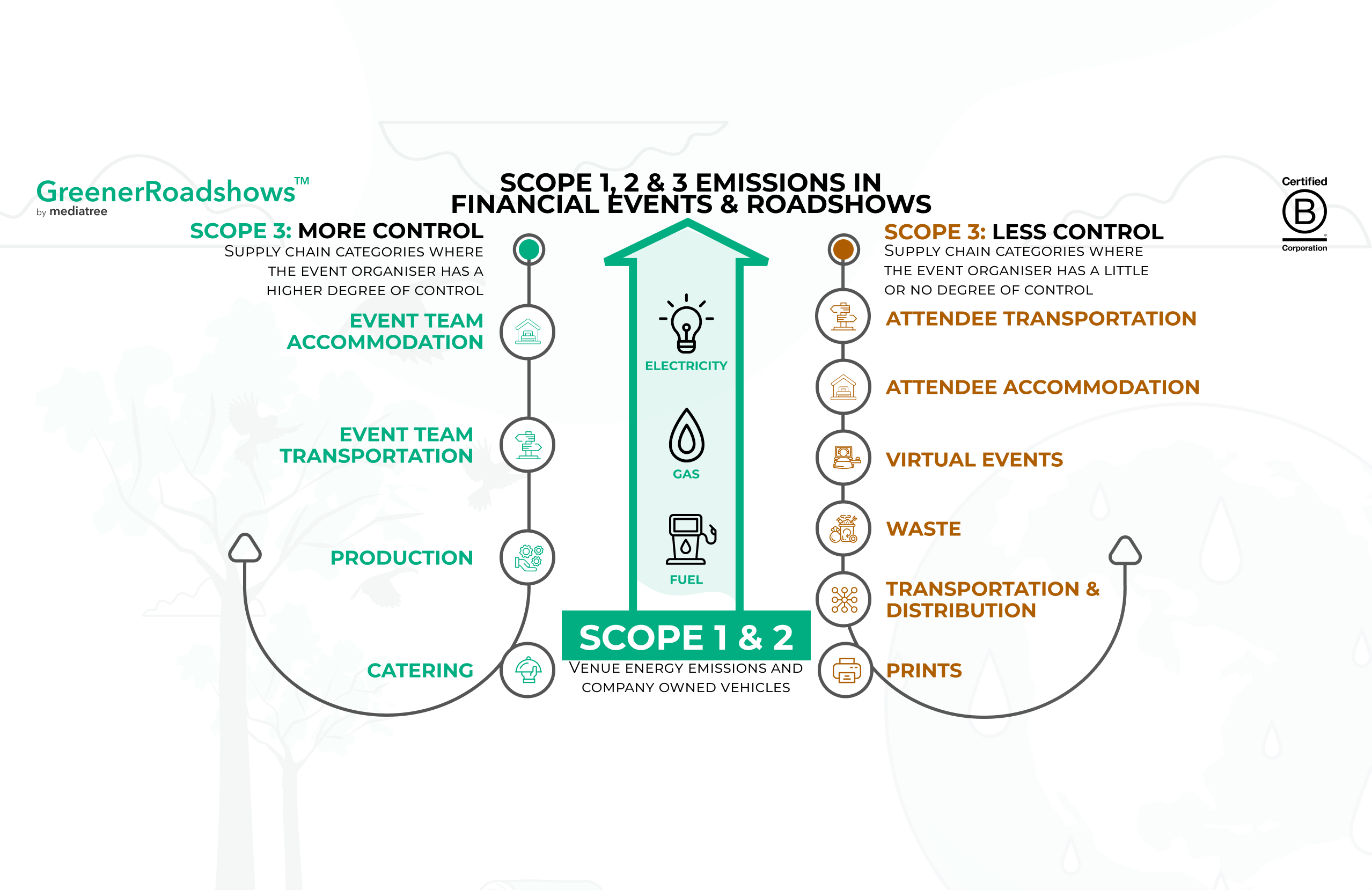Scope 1, 2 & 3 Emissions

Scope 1, 2 & 3 – why are they important?
The Green House Gas (GHG) Protocol first introduced Scope 1, 2, and 3 emissions in 2001. These scopes categorise the carbon emissions that organisations emit through their activities and operations, as well as across their entire value chain. In the UK, Scopes 1 and 2 are mandatory in GHG reporting, while Scope 3 remains voluntary to report. Scope 3 is typically responsible for the highest emitting categories and activities. Neglecting to calculate and communicate Scope 3 emissions can significantly reduce transparency in reporting and lead to a lack of trust from consumers, investors or event attendees.
Deep dive into the Scopes
Scope 1 – Direct GHG emissions that occur from sources that are immediately owned or controlled by an organisation. These include emissions associated with fuel consumption from boilers, furnaces, or company owned vehicles
Scope 2 – Indirect GHG emissions occurring from where the energy an organisation purchases and uses is produced. This includes the emissions caused by the energy generated to power company buildings
Scope 3 – All indirect emissions (not included in scope 2) that occur in the value chain of the reporting organisation, including both upstream and downstream emissions. Scope 3 breaks down into a further 15 categories:
Upstream emissions:
- Purchased goods and services
- Capital goods
- Fuel- and energy-related activities (not included in scope 1 or scope 2)
- Upstream transportation and distribution
- Waste generated in operations
- Business travel
- Employee commuting
- Upstream leased assets
Downstream emissions:
- Downstream transportation and distribution
- Processing of sold products
- Use of sold products
- End-of-life treatment of sold products
- Downstream leased assets
- Franchises
- Investments
As well as tending to generate the highest emissions, Scope 3 is also the most challenging from a data gathering perspective.
How GreenerRoadshows take the Scopes into consideration
Although the GHG Protocol has successfully implemented corporate and product life cycle standards and guidance for the scope calculations, a methodology for event calculation has not yet been established. GreenerRoadshows breaks down the approach to the individual scope calculations and adapts the scope 3 categories to whatever is relevant to each specific event.
Multiple factors, under both physical and virtual umbrellas, are taken into consideration to ensure the calculations and data collected are complete. GreenerRoadshows aim to follow a conservative approach, meaning that when data is missing, the highest emission factor value is assumed. In order to ensure that all data is properly considered, verify all of GreenerRoadshows calculations are verified by an external 3rd party before presenting the final results to the clients.
Conclusion
Many companies do not want to go through the arduous process of gathering data to then see their yearly emissions drastically increase. However, claiming reduction and carbon neutrality based on solely scope 1 and 2 could be viewed as greenwashing by external audiences. It is important to move towards reporting all scope emissions to maximise accuracy and transparency in sustainability reporting and target setting and GreenerRoadshows’ sole focus is to help you with this transition. Get in touch if you want to know more!